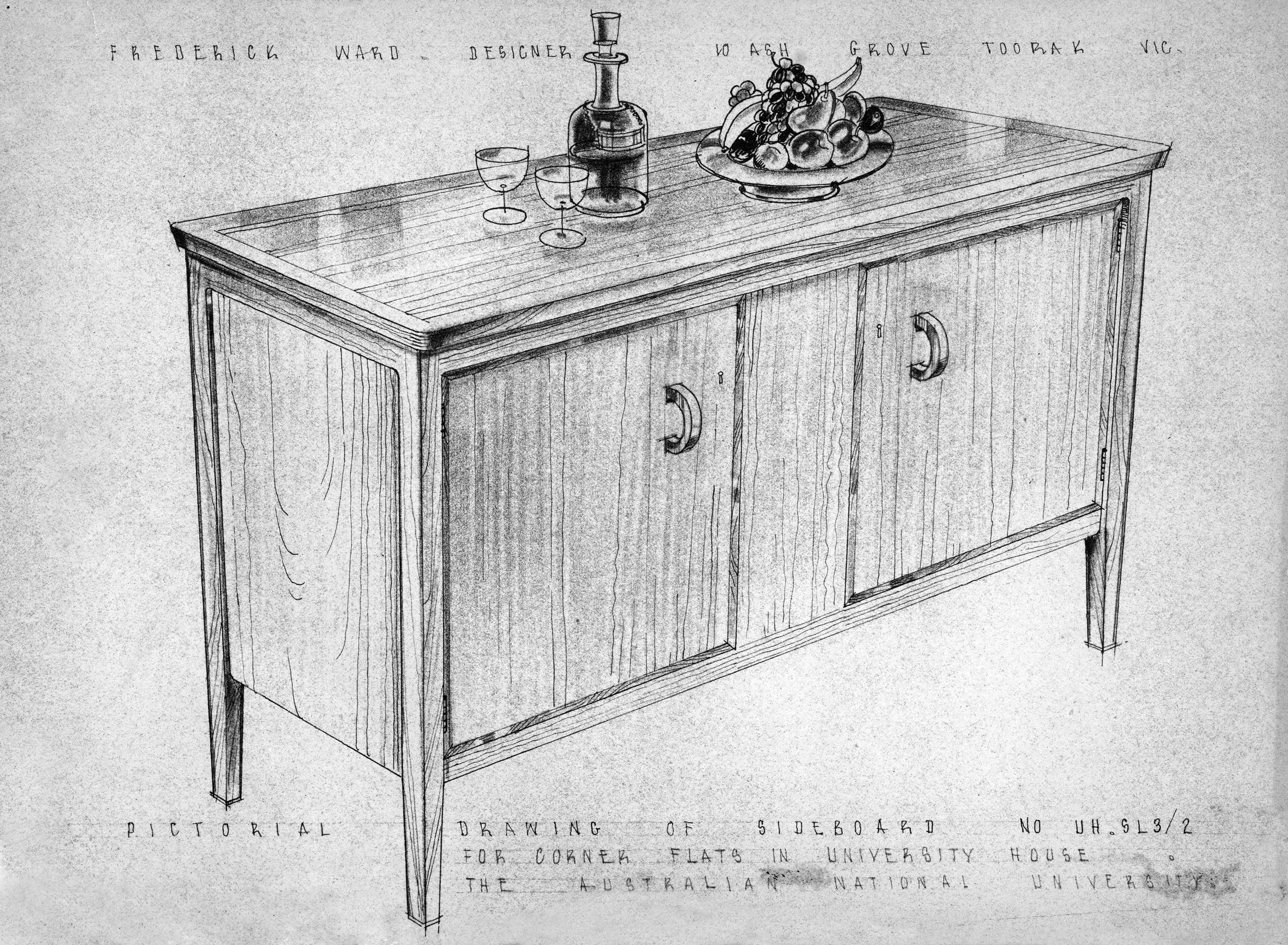Fred Ward
Frederick Charles Cecil Ward was born in Melbourne in 1900. As a young man he attended the school of drawing at the National Gallery of Victoria before working as a freelance illustrator and cartoonist.
In 1929 he began designing furniture and started selling his pieces to friends. He devised his own training, trawled the antique shops of Prahran for inspiration and attended technical-drawing classes at night. Inspired by the Arts and Crafts movement’s focus on function, he made joints a point of interest in his work and used mainly native Australian timbers.
In 1932, he established a shop and interior-design consultancy in Melbourne and in 1933 he exhibited his furniture for the Arts and Crafts Society of Victoria and the Exhibition of British Contemporary Art in Melbourne.
The Myer Emporium Ltd engaged Ward to manage its fine-furniture workshop in North Melbourne and in 1934 he launched for Myer his ‘austere unit range’ of modular furniture. Its affordability during the Depression contributed to its success and consolidated Ward’s reputation as Australia’s leading modernist designer.
In 1942 the Department of Aircraft Production sought Ward’s advice on the manufacture of the timber-framed Mosquito bomber at Fishermens Bend and he later took charge of the plans and drawings for the Beaufighter aircraft.
After the war Ward turned to industrial design, specialising in the conversion of wartime machinery into other pieces, designing cooking ranges, and working for the Victorian Railways on the interior of the new diesel train, the Spirit of Progress. In 1947 he developed the ‘do-it-yourself’ Patterncraft furniture patterns, marketed by Australian Home Beautiful. In 1948 he designed the popular first chair for Fred Lowen and Ernest Rodeck, made in their then backyard factory (later Fler Co. Ltd).
Having lectured part time (1949-52) in interior architecture at the University of Melbourne, Ward moved to Canberra after winning a competition for the design of the furniture and furnishings of University House at the Australian National University. As the first head of the ANU design unit he oversaw campus planning, and furniture and interior design. Retiring from the ANU in 1961, he returned to private practice and designed furniture for the Reserve Bank of Australia, Admiralty House and the National Library of Australia.
Ward helped to establish the Society of Designers for Industry in 1948 (Industrial Design Institute of Australia from 1956) and the Industrial Design Council of Australia (1958), receiving the council’s inaugural Essington Lewis award in 1964. In 1970 he was appointed MBE.
Ward died on 25 July 1990 at Queanbeyan, New South Wales.



